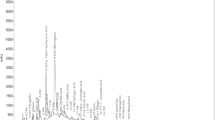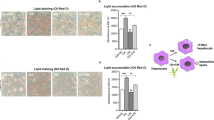Abstract
Melilotus indicus, is a traditional medicine used as analgesic and emollient. Although Melilotus indicus extract (MIE) has recently been shown to suppress growth of several tumor cell lines, information regarding its antitumor mechanism is completely unknown. Here, we report the mechanism underlying the effects of MIE on human hepatocellular carcinoma cells, specifically HepG2, and SNU-182 cells. Methanolic MIE impaired the proliferation, and induced cell death in both HepG2 and SNU-182 cells but not in normal hepatic L-02 cells. Mechanistically, flow cytometric analysis revealed that MIE induces apoptosis in HepG2, and SNU-182 cells. However, MIE-induced apoptosis were not affected by a pan caspase inhibitor z-VAD-fmk as well as MIE did not stimulate caspase activation. Furthermore we found that MIE-induced apoptosis could be attributed to a mechanism involving mitochondria-mediated pathways evidenced by decrease in the mitochondrial membrane potential (ΔΨm), increase in the Bax/Bcl-2 ratio, and translocation of apoptosis inducing factor (AIF) from the mitochondria to the nucleus. Suppression in AIF expression by siRNA reduced MIE-induced apoptosis which suggested the dependency of MIE on AIF to induce apoptosis in hepatocellular carcinoma cells. To the best of our knowledge this is the first report elucidating the anticancer mechanism of MIE. Our findings suggested that MIE might be a good extract for developing anticancer drugs for human hepatocellular carcinoma treatment.




Similar content being viewed by others
References
Abd El-Hafeez AA, Rakha OM (2017) Paederus alfieri extract induces apoptosis in human myeloid leukemia K562 cells. Asian J Pharm Clin Res 10:1–4
Abd El-Hafeez AA, Fujimura T, Kamei R, Hirakawa N, Baba K, Ono K, Kawamoto S (2017a) A methoxyflavanone derivative from the Asian medicinal herb (Perilla frutescens) induces p53-mediated G2/M cell cycle arrest and apoptosis in A549 human lung adenocarcinoma. Cytotechnology. https://doi.org/10.1007/s10616-017-0116-1
Abd El-Hafeez AA, Fujimura T, Kamei R, Hirakawa N, Baba K, Ono K, Kawamoto S (2017b) Synergistic tumor suppression by a Perilla frutescens-derived methoxyflavanone and anti-cancer tyrosine kinase inhibitors in A549 human lung adenocarcinoma. Cytotechnology. https://doi.org/10.1007/s10616-017-0124-1
Abu-Dahab R, Afifi F (2007) Antiproliferative activity of selected medicinal plants of Jordan against a breast adenocarcinoma cell line (MCF7). Sci Pharm 75:121–146
Ahmed SAK, Al-Refai M (2014) Chemical constituents and cytotoxic activities of the extracts of Melilotus indicus. Eur J Chem 5:503–506
Ahmed D, Baig H, Zara S (2012) Seasonal variation of phenolics, flavonoids, antioxidant and lipid peroxidation inhibitory activity of methanolic extract of Melilotus indicus and its sub-fractions in different solvents. Int J Phytomed 4:326–332
Al Sherif EA (2009) Melilotus indicus (L.) All., a salt-tolerant wild leguminous herb with high potential for use as a forage crop in salt-affected soils. Flora Morphol Distrib Funct Ecol Plants 204:737–746
Basañez G, Soane L, Hardwick JM (2012) A new view of the lethal apoptotic pore. PLoS Biol 10:e1001399
Bleicken S, Landeta O, Landajuela A, Basañez G, García-Sáez AJ (2013) Proapoptotic Bax and Bak proteins form stable protein-permeable pores of tunable size. J Biol Chem 288:33241–33252
Cabon L, Galán-Malo P, Bouharrour A, Delavallée L, Brunelle-Navas MN, Lorenzo HK, Gross A, Susin SA (2012) BID regulates AIF-mediated caspase-independent necroptosis by promoting BAX activation. Cell Death Differ 19:245–256
Cohen GM (1997) Caspases: the executioners of apoptosis. Biochem J 326:1–16
Dai L, Ren P, Liu M, Imai H, Tan EM, Zhang J-Y (2014) Using immunomic approach to enhance tumor-associated autoantibody detection in diagnosis of hepatocellular carcinoma. Clin Immunol 152:127–139
Diederich M, Noworyta K (2012) Natural compounds as inducers of cell death, vol 1. Springer, Berlin
Dong QM, Ling C, Chen X, Zhao L (2015) Inhibition of tumor necrosis factor-α enhances apoptosis induced by nuclear factor-κB inhibition in leukemia cells. Oncol Lett 10:3793–3798
El-Ghani MMA, El-Sawaf N (2004) Diversity and distribution of plant species in agro-ecosystems of Egypt. Syst Geogr Plants 74:319–336
Elmore S (2007) Apoptosis: a review of programmed cell death. Toxicol Pathol 35:495–516
Fulda S, Debatin K (2006) Extrinsic versus intrinsic apoptosis pathways in anticancer chemotherapy. Oncogene 25:4798–4811
García-Sáez AJ, Fuertes G, Suckale J, Salgado J (2010) Permeabilization of the outer mitochondrial membrane by Bcl-2 proteins. In: Anderluh G, Lakey J (eds) Proteins membrane binding and pore formation. Advances in experimental medicine and biology, vol 677. Springer, New York, NY, pp 91–105
Hengartner MO (2000) The biochemistry of apoptosis. Nature 407:770–776
Horinaka M, Yoshida T, Shiraishi T, Nakata S, Wakada M, Nakanishi R, Nishino H, Matsui H, Sakai T (2005) Luteolin induces apoptosis via death receptor 5 upregulation in human malignant tumor cells. Oncogene 24:7180–7189
Hussain K, Shahazad A, Zia-ul-Hussnain S (2008) An ethnobotanical survey of important wild medicinal plants of Hattar district Haripur, Pakistan. Ethnobot Leafl 12:29–35
Joza N, Susin SA, Daugas E, Stanford WL (2001) Essential role of the mitochondrial apoptosis-inducing factor in programmed cell death. Nature 410:549–554
Karakaş FP, Yildirim A, Türker A (2012) Biological screening of various medicinal plant extracts for antibacterial and antitumor activities. Turk J Biol 36:641–652
Kim MJ, Woo JS, Kwon CH, Kim JH, Kim YK, Kim KH (2012) Luteolin induces apoptotic cell death through AIF nuclear translocation mediated by activation of ERK and p38 in human breast cancer cell lines. Cell Biol Int 36:339–344
Kundu T, Dey S, Roy M, Siddiqi M, Bhattacharya R (2005) Induction of apoptosis in human leukemia cells by black tea and its polyphenol theaflavin. Cancer Lett 230:111–121
Lipton SA, Bossy-Wetzel E (2002) Dueling activities of AIF in cell death versus survival: DNA binding and redox activity. Cell 111:147–150
Loeffler M, Daugas E, Susin SA, Zamzami N, Metivier D, Nieminen AL, Brothers G, Penninger JM, Kroemer G (2001) Dominant cell death induction by extramitochondrially targeted apoptosis-inducing factor. FASEB J 15:758–767
Mahyar-Roemer M, Katsen A, Mestres P, Roemer K (2001) Resveratrol induces colon tumor cell apoptosis independently of p53 and precede by epithelial differentiation, mitochondrial proliferation and membrane potential collapse. Int J Cancer 94:615–622
Martinou J-C, Green DR (2001) Opinion: breaking the mitochondrial barrier. Nat Rev Mol Cell Biol 2:63–67
Marzo I, Perez-Galan P, Giraldo P, Rubio-Felix D, Alberto A, Naval J (2001) Cladribine induces apoptosis in human leukaemia cells by caspase-dependent and-independent pathways acting on mitochondria. Biochem J 359:537–546
Mukhtar E, Mustafa Adhami V, Khan N, Mukhtar H (2012) Apoptosis and autophagy induction as mechanism of cancer prevention by naturally occurring dietary agents. Curr Drug Targets 13:1831–1841
Nagata S, Nagase H, Kawane K, Mukae N, Fukuyama H (2003) Degradation of chromosomal DNA during apoptosis. Cell Death Differ 10:108–116
Parrish AB, Freel CD, Kornbluth S (2013) Cellular mechanisms controlling caspase activation and function. Cold Spring Harb Perspect Biol 5:a008672
Pistritto G, Trisciuoglio D, Ceci C, Garufi A, D’Orazi G (2016) Apoptosis as anticancer mechanism: function and dysfunction of its modulators and targeted therapeutic strategies. Aging 8:603–619
Pleşca-Manea L, Pârvu AE, Pârvu M, Taaˇmaş M, Buia R, Puia M (2002) Effects of Melilotus officinalis on acute inflammation. Phytother Res 16:316–319
Quattrocchi U (2012) CRC world dictionary of medicinal and poisonous plants: common names, scientific names, eponyms, synonyms, and etymology (5 volume set). CRC Press, Boca Raton, FL, USA
Rizk A-F (1990) Poisonous plant contamination of edible plants. CRC Press, Boca Raton, FL, USA
Rogers ME, Colmer TD, Frost K, Henry D, Cornwall D, Hulm E, Deretic J, Hughes SR, Craig AD (2008) Diversity in the genus Melilotus for tolerance to salinity and waterlogging. Plant Soil 304:89–101
Ruffa M, Ferraro G, Wagner M, Calcagno M, Campos R, Cavallaro L (2002) Cytotoxic effect of Argentine medicinal plant extracts on human hepatocellular carcinoma cell line. J Ethnopharmacol 79:335–339
Shun-jiu ZJ-wZ, Li QS-hL (2007) Treatment of deep venous thrombosis of lower extremities by low molecular weight heparin sodium and melilotus extract tablet. Chin J Clin Pharm 3:018
Stefanović OD, Tešić JD, Čomić LR (2015) Melilotus albus and Dorycnium herbaceum extracts as source of phenolic compounds and their antimicrobial, antibiofilm, and antioxidant potentials. J Food Drug Anal 23:417–424
Susin SA, Lorenzo HK, Zamzami N, Marzo I (1999) Molecular characterization of mitochondrial apoptosis-inducing factor. Nature 397:441–446
Tait SW, Green DR (2008) Caspase-independent cell death: leaving the set without the final cut. Oncogene 27:6452–6461
Wang X, Yuan S, Wang J, Lin P, Liu G, Lu Y, Zhang J, Wang W, Wei Y (2006) Anticancer activity of litchi fruit pericarp extract against human breast cancer in vitro and in vivo. Toxicol Appl Pharmacol 215:168–178
Xu F, Zeng W, Mao X, Fan G-K (2008) The efficacy of melilotus extract in the management of postoperative ecchymosis and edema after simultaneous rhinoplasty and blepharoplasty. Aesthet Plast Surg 32:599–603
Yadava R, Jain S (2005) A new bioactive flavone glycoside from the seeds of Melilotus indica All. J Asian Nat Prod Res 7:595–599
Zamzami N, Marchetti P, Castedo M, Zanin C, Vayssiere J-L, Petit PX, Kroemer G (1995) Reduction in mitochondrial potential constitutes an early irreversible step of programmed lymphocyte death in vivo. J Exp Med 181:1661–1672
Zhang XY, Tao JY, Zhao L, Huang ZJ, Xiong FL, Zhang SL, Li CM, Xiao F (2007) In vitro anti-inflammatory effects of different solution fractions of ethanol extract from Melilotus suaveolens Ledeb. Chin Med J 120:1992–1998
Zhao L, Tao J-Y, Zhang S-L, Pang R, Jin F, Dong J-H, Guo Y-J (2007) Inner anti-inflammatory mechanisms of petroleum ether extract from Melilotus suaveolens Ledeb. Inflammation 30:213–223
Funding
This research did not receive any specific grant from funding agencies in the public, commercial, or not-for-profit sectors.
Author information
Authors and Affiliations
Corresponding author
Ethics declarations
Conflict of interest
All authors declare that they have no conflicts of interest.
Electronic supplementary material
Below is the link to the electronic supplementary material.
Rights and permissions
About this article
Cite this article
Abd El-Hafeez, A.A., Khalifa, H.O., Elgawish, R.A. et al. Melilotus indicus extract induces apoptosis in hepatocellular carcinoma cells via a mechanism involving mitochondria-mediated pathways. Cytotechnology 70, 831–842 (2018). https://doi.org/10.1007/s10616-018-0195-7
Received:
Accepted:
Published:
Issue Date:
DOI: https://doi.org/10.1007/s10616-018-0195-7




